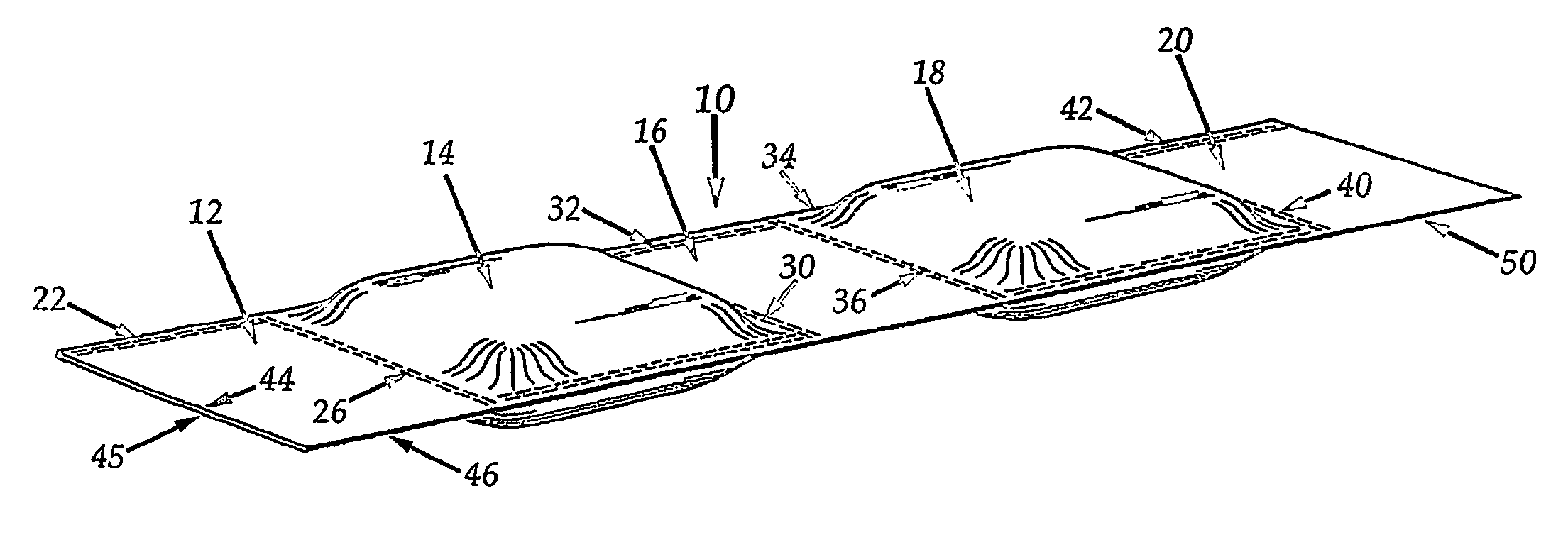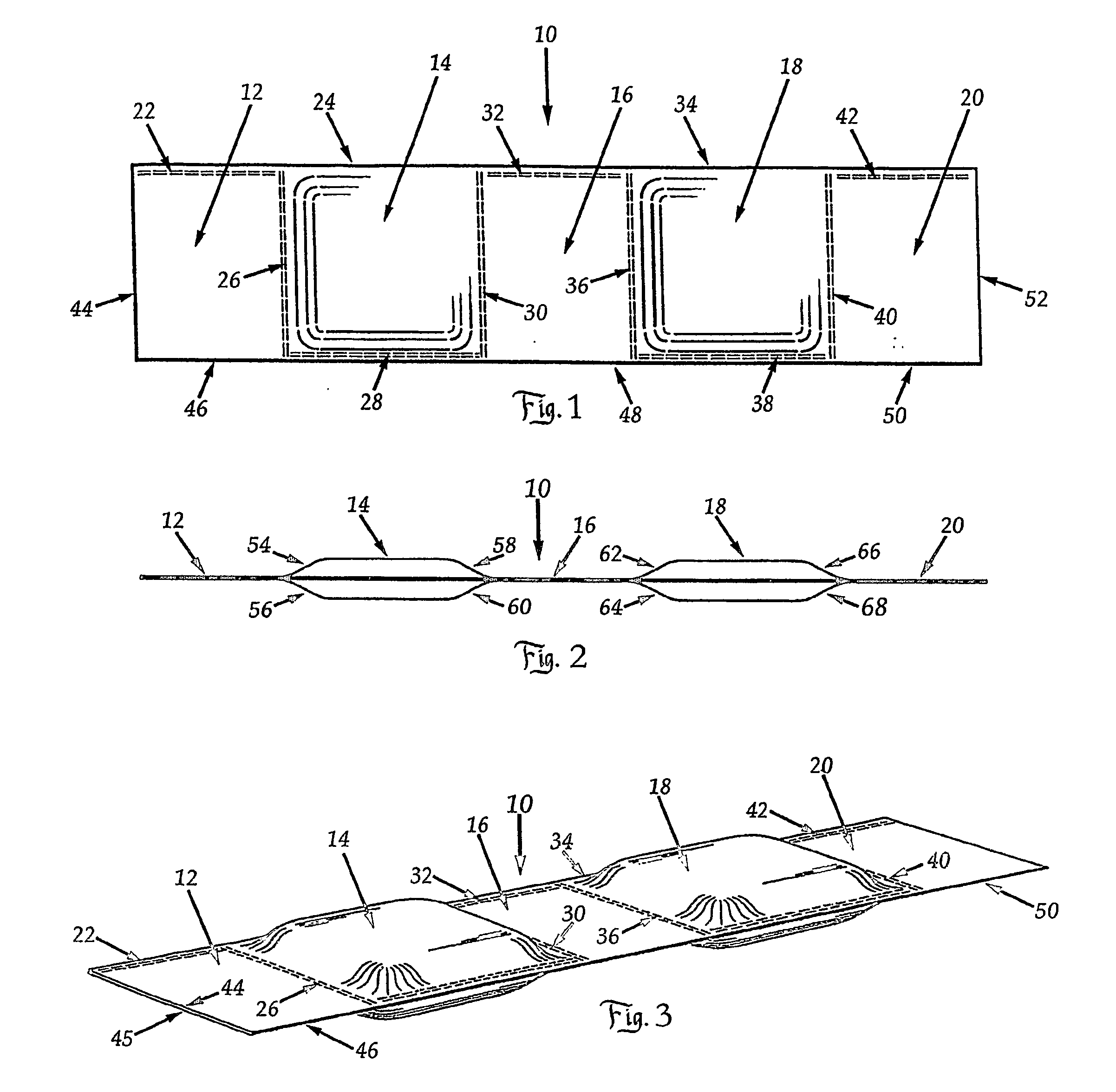Sectional interlocking barrier bags
- Summary
- Abstract
- Description
- Claims
- Application Information
AI Technical Summary
Benefits of technology
Problems solved by technology
Method used
Image
Examples
Embodiment Construction
[0014] Referring now to the drawings, there is shown in FIGS. 1-3 a length of material 10, such as canvas, woven polyethylene, woven polypropylene, burlap, ballistic nylon, woven organic fibers or other material, formed into a single bag unit by folding over the material 10 lengthwise into two equal-sized lengths and dividing the folded material into substantially equal-sized, square sections 12, 14, 16, 18 and 20. Sections 14 and 18 are filled with sand, or another material, and sections 12, 16 and 20 are unfilled. The sections are divided and sealed along dotted lines 22, 24, 26, 28, 30, 32, 34, 36, 38, 40 and 42, by any method of sealing the sections apart, such as heat, sewing, clamping, stapling or adhesive. Since material 10 is folded over lengthwise, there is no need to seal the material at edges 44, 46, 48, 50 and 52. However, if desired, these edges can also be sealed by any of the same methods. FIG. 3 shows the material 10 folded over into two equal lengthwise portions at ...
PUM
 Login to View More
Login to View More Abstract
Description
Claims
Application Information
 Login to View More
Login to View More - R&D
- Intellectual Property
- Life Sciences
- Materials
- Tech Scout
- Unparalleled Data Quality
- Higher Quality Content
- 60% Fewer Hallucinations
Browse by: Latest US Patents, China's latest patents, Technical Efficacy Thesaurus, Application Domain, Technology Topic, Popular Technical Reports.
© 2025 PatSnap. All rights reserved.Legal|Privacy policy|Modern Slavery Act Transparency Statement|Sitemap|About US| Contact US: help@patsnap.com



